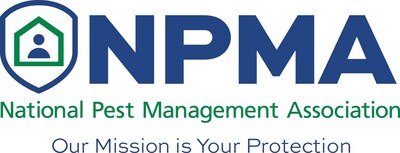The Perfect Storm for Public Health Pests: NPMA Highlights Incoming Threats
PR Newswire
FAIRFAX, Va., Aug. 20, 2025
Thanks to high temperatures and variable precipitation, certain cities are at greater risk for pest-borne diseases
FAIRFAX, Va., Aug. 20, 2025 /PRNewswire/ -- Today, the National Pest Management Association (NPMA) released its Public Health Pest Index™, a bi-annual forecast identifying the United States cities most at risk for pest surges through the remainder of summer and into fall. This critical report comes as extreme weather patterns nationwide have created optimal conditions for disease-carrying pests, placing millions of Americans in greater danger of exposure.
"There's a common misconception that pest threats are predictably seasonal, but changing weather patterns have rewritten the rules," said Dr. Jim Fredericks, Senior Vice President of Public Affairs for NPMA. "Pests are staying active longer, increasing the risk of disease transmission. Our Public Health Pest Index™ helps families and businesses understand these evolving threats and take proactive steps to protect their health and property year-round."
Nationwide, these longer pest seasons are leading to serious health consequences. "Emergency departments are reporting significant increases in tick bite-related visits, while rates of mosquito- and tick-borne illnesses like West Nile virus and Lyme disease are on the rise," explained Dr. Jorge Parada, Medical Advisor for NPMA with a focus on infectious disease. "Beyond these, cockroaches can trigger severe asthma symptoms in children, rodents can spread over 35 diseases, and flies can transmit more than 100 pathogens."
The top U.S. cities* named to NPMA's Public Health Pest Index™ include:
- Baltimore: Sweltering heat and record rainfall have created a perfect storm for mosquitoes and ticks. This extreme weather threatens to push pest activity into fall, increasing exposure to West Nile virus and tick-borne illnesses.
- Charlotte: A hot, rainy season could provide ideal breeding conditions for moisture-loving pests. Residents face prolonged exposure periods that may stretch disease transmission risks well beyond the summer months.
- New Orleans: Scorching heat and record downpours will likely drive population booms among cockroaches, flies, and mosquitoes. The city's notorious humidity, combined with summer's wet weather, creates year-round breeding conditions that show no signs of slowing.
- New York: Dramatically warmer summer temperatures and increased rainfall are leading to longer, more active seasons for cockroaches, mosquitoes, and rodents. As a result, these pests are likely to move inside, drawn to climate-controlled environments and food sources.
- Philadelphia: An exceptionally wet spring set the stage for a surge in mosquito breeding, while high summer temperatures are driving cockroaches and rodents indoors in search of water. Recent West Nile virus detections in the region make the threat even more serious, as mosquito populations can multiply rapidly.
- Portland: Extreme summer heat and drought conditions prime the environment for a surge in pest invasions. As natural water and food sources dry up, desperate cockroaches and rodents will seek refuge in homes and businesses.
- Salt Lake City: Unseasonably warm spring temperatures coupled with hot summer conditions can prolong mosquito and tick breeding season. Combined with June's added moisture, pest activity may stay high well into fall, putting outdoor enthusiasts at heightened risk in Utah's popular recreation areas.
- San Francisco: After a warm spring and intense summer, the Bay Area may face unexpected pest challenges. Following an exceptionally dry June, late summer rain could trigger a surge in cockroach and mosquito activity through fall.
- Washington, D.C.: A wet spring followed by a scorching summer introduces ideal conditions for a multi-pest surge across the nation's capital. These conditions can allow cockroaches, flies, ticks and mosquitoes to thrive throughout neighborhoods and recreational areas.
- West Palm Beach: Record spring and summer heat, paired with increased rainfall, is helping mosquito populations multiply, heightening the risk of mosquito-borne illnesses in the area.
*Listed in alphabetical order, not numeric ranking.
To protect Americans and their families from escalating pest-borne health threats, NPMA recommends immediate action: eliminate sources of standing water, maintain grass and shrubs to reduce pest harborage, regularly check for and seal cracks around building foundations, and store food in airtight containers. When outdoors, use insect repellent containing EPA-registered ingredients and conduct thorough tick checks after activities.
If you suspect a pest infestation, always contact a qualified pest control professional to properly identify and address the issue. For more information on pests and the risks they pose, visit PestWorld.org.
About the National Pest Management Association
The NPMA, a non-profit organization with more than 4,000 members, was established in 1933 to support the pest management industry's commitment to the protection of public health, food and property from the diseases and dangers of pests. For more information, visit PestWorld.org or follow @PestWorld on Facebook, X, TikTok and YouTube and @PestWorldOfficial on Instagram.
![]() View original content to download multimedia:https://www.prnewswire.com/news-releases/the-perfect-storm-for-public-health-pests-npma-highlights-incoming-threats-302534774.html
View original content to download multimedia:https://www.prnewswire.com/news-releases/the-perfect-storm-for-public-health-pests-npma-highlights-incoming-threats-302534774.html
SOURCE National Pest Management Association



